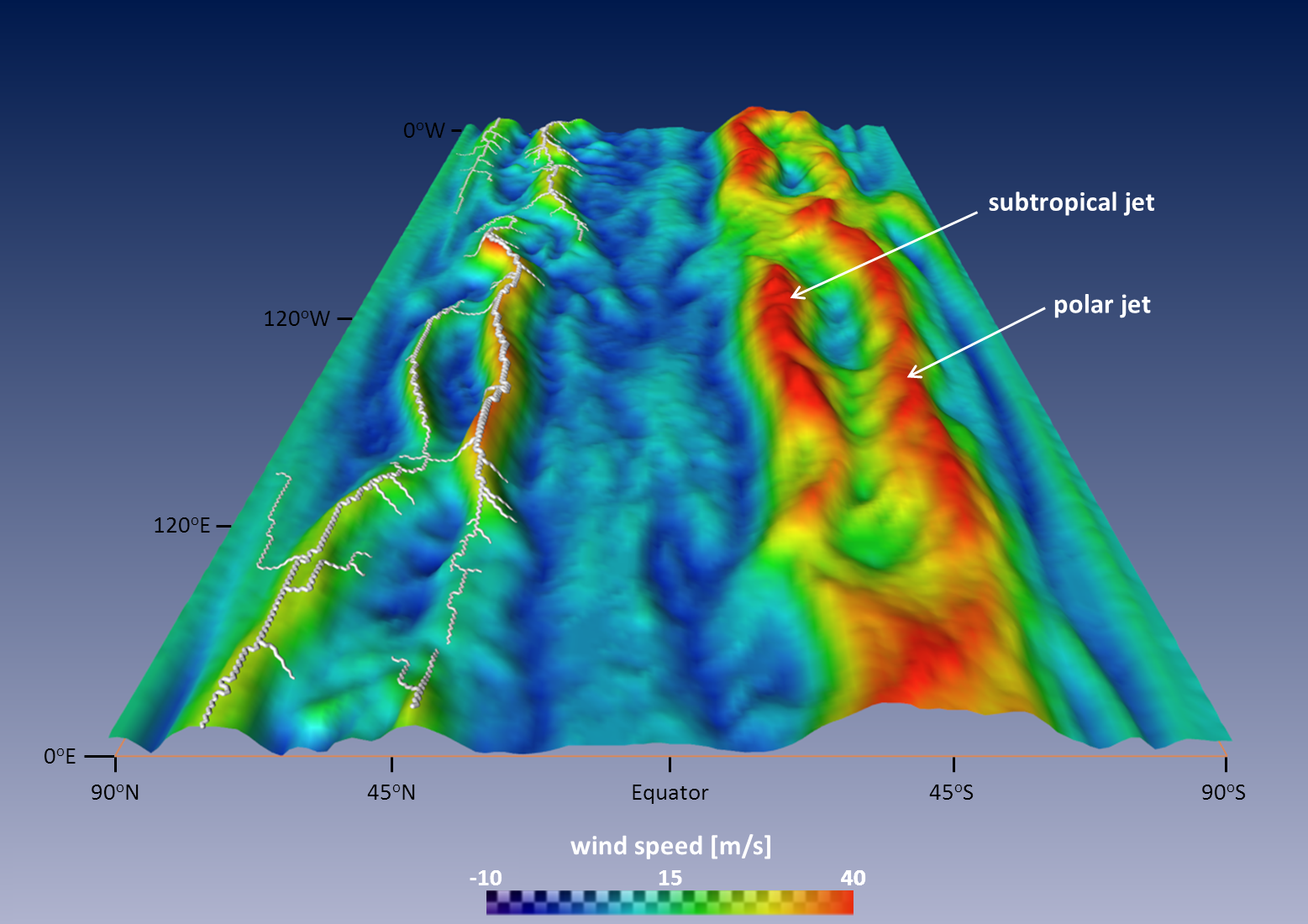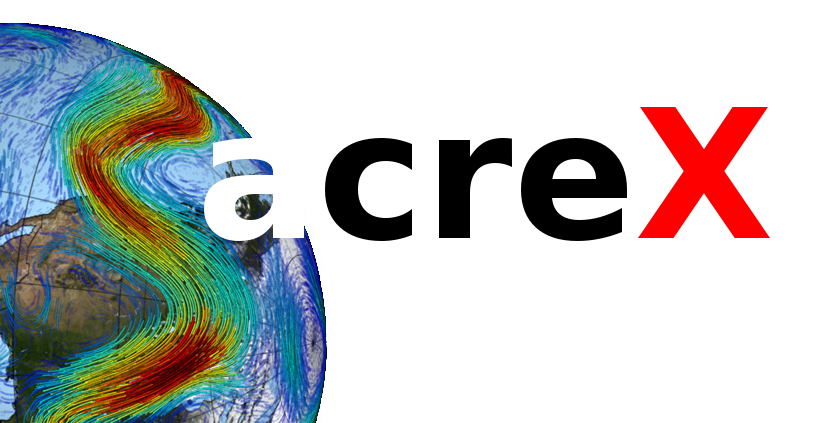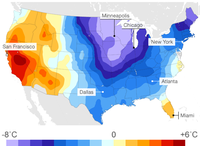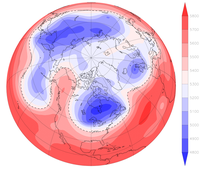
Visualization of wind speed in July 2010 (300mb) Horizontal axis depict North-South direction (Northern hemisphere is left) and vertical axis the East-West direction. Subtropical and polar jets are clearly visible in both hemispheres.
In the Northern Hemisphere, jets are traced using topology methods as shown with white lines.
Figure was made in collaboration with Thomas Nocke (PIK) and Tino Weinkauf and Janick Martinez-Esturo (MPI for Informatics, Saarbrücken.

Shifts in large-scale circulation patterns can strongly alter the frequency and/or intensity of extremes and can thus have severe humanitarian impacts. Climate change over the last century has already alter ed some large-scale circulation patterns but the uncertainties are large.
Our research aims to reduce these uncertainties by providing fundamental insights in atmospheric circulation, its modes of variability, and the link to weather extremes. Key research questions are:
- How does rapid warming in the Arctic alter circulation patterns in the mid-latitudes?
- Why did so-called wave-resonance events, associated with extreme weather, occur more often recently?
- How does the Hadley circulation change under global warming and what are the key drivers?
- How do changes in Rossby waves and jets affect surface weather and why?
Winter 2014: US Cold spell associated with polar vortex break down
|
|  |
|---|
In January 2014, a so-called Polar vortex breakdown (left) brought cold Arctic air to the eastern US (right).
Start of the project: March 2014
Contact (Principle Investigator - PI): Dim Coumou






